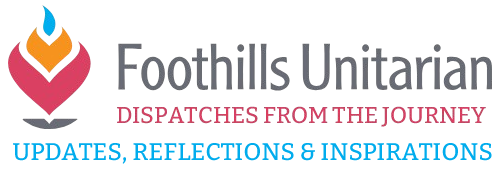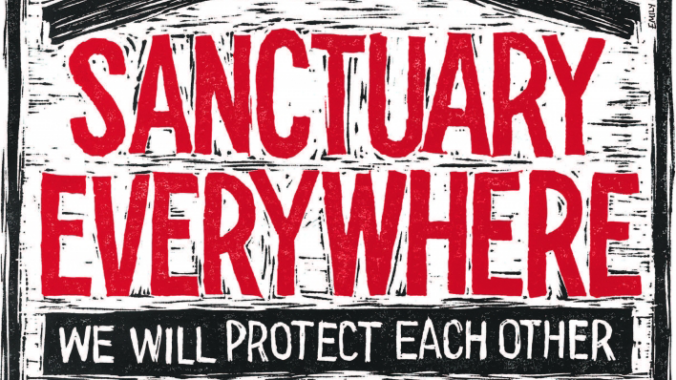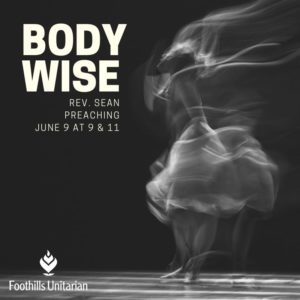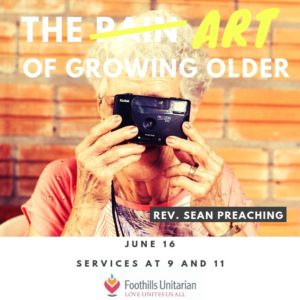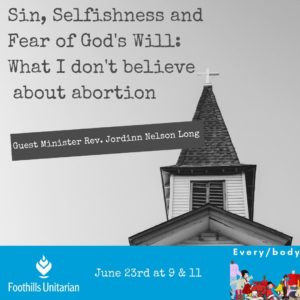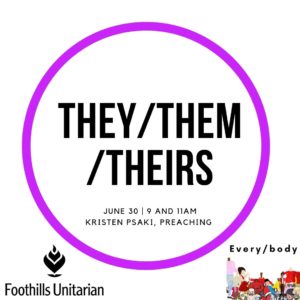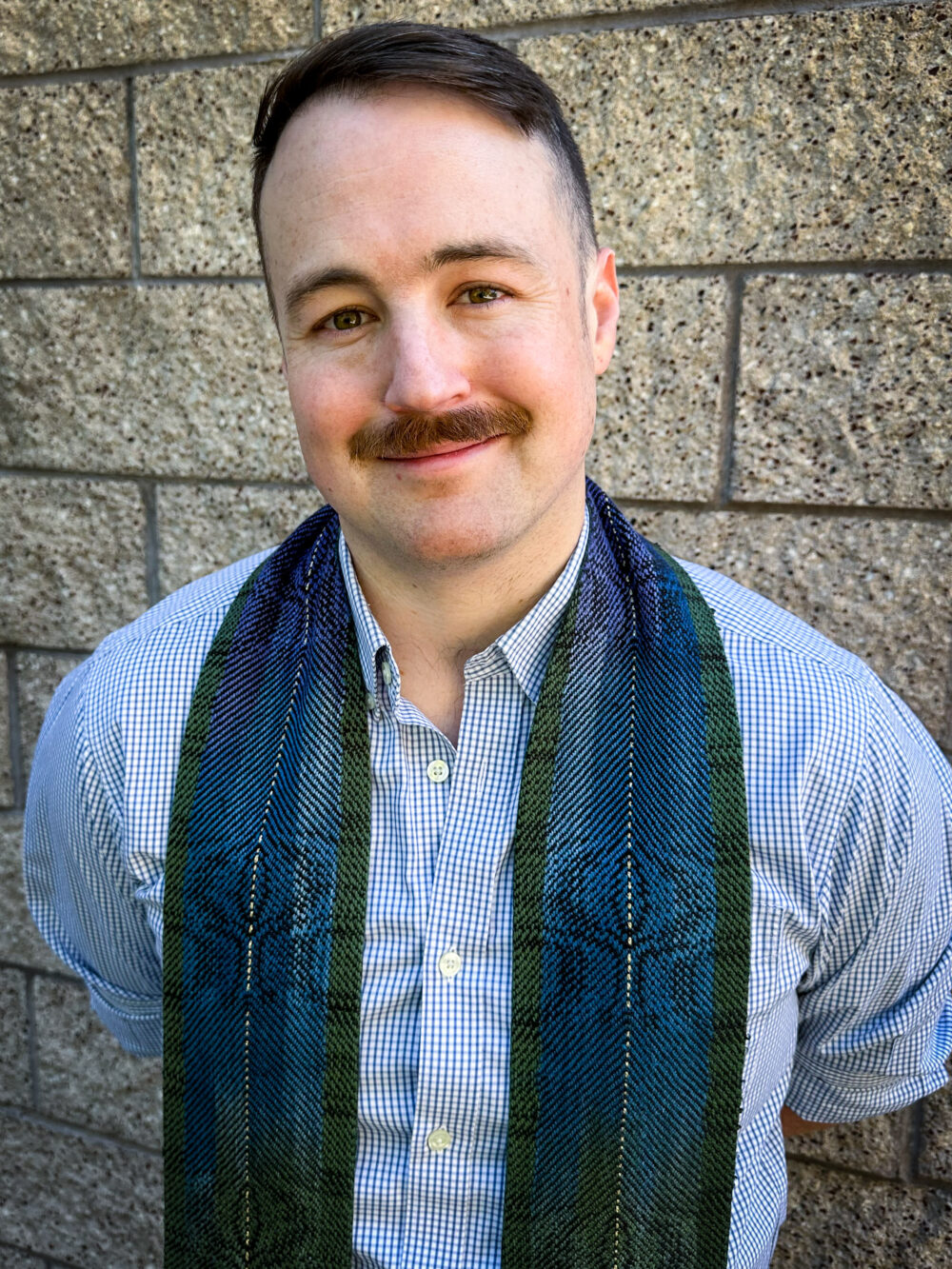by Melissa Monforti
Interim Music Lead
Random person: So what do you do?
Music Director: I’m a music director at a church.
Random person: Oh. You’re one of those people who tries to make me FEEL things.
One of my mentors reiterated this conversation to me early in my discernment about music ministry. On certain levels, it’s true. Music does help us feel our feelings. And music in worship is especially prone to tapping into the emotional work that is necessary when we live in covenant.
In our music traditions as UUs, singing together is core to our experience of community. It is literally one of the ways we live out our covenant. Our songs encapsulate our values, our philosophy, our theology, our principles. Singing our songs together is truly a blessing. It is one of the ways we collectively embody the spirit of this church.
The music program at Foothills is at its heart a creative ministry. Music falls into one of the areas of life that is inherently creative. When someone makes music, silence becomes sound. Something that did not at first exist, is created and fills the space. Music is by nature a creative act.
Perhaps less obvious: music is never a solitary creative act. Music must be and always is a result of INTERaction and is therefore a communal act.
But what about the painfully beautiful violin solo? What about the solitary midnight guitar jam in the garage? Yes, even these are not lonely moments but interactions, and here’s why.
Music is movement. Music is created by air moving, sound waves, vibrations. There can be no music without something moving through space, and if there is movement, something eventually receives the movement. There is a physical point where the sound wave is created and a point where it is received. Every vibration is an interaction of string, wood, metal, animal skin, reed, and of course the ears of those who hear the music.
I would also argue that the best music is designed to be created in community. Think of your favorite band playing Red Rocks. Think of an orchestra playing Mozart.
Think of our beloved Foothills choir — voices of many, blending and harmonizing to create something no one voice can produce alone. Think of our newly established Worship Band — each instrument and each voice coming together to fill the space with sound.
Think also of yourself — raising your voice, no matter how musical you may think you are. Your voice becomes part of the creation of music in all our worship experiences together. That vibration you make, be it tiny or vibrant, is sound in motion, and therefore you are a creative music maker too.
All that musical interaction touches us without our even trying. Yes, music makes us feel things, and because we embrace music at church, then I guess it is the job of the music director to help that process along.
In my year of service at Foothills, I have noticed some pretty great things about this amazing church. Before joining you, I had been an integral part of the music programs at two other UU churches, been a guest at several others, and offered time and talent to our larger UU movement as a songwriter and performer at the national UU musicians’ conferences and at the General Assembly of all UU churches.
In all that exposure, I can say with certainty that Foothills is a special place. As my time here comes to a close, let me share with you these reflections.
- Foothills is a singing congregation. People, you SING! The sanctuary can hardly contain it! What a gift to know that no matter how you feel on any particular Sunday, you will be surrounded by song.
- Foothills is a willing congregation. Willing to try new songs, willing to sing in rounds, willing to experiment musically.
- Foothills is an open congregation. You openly embraced my style of music leadership. You have been open to various genres of music, from traditional to contemporary. You open your hearts when the music moves you to tears.
- Foothills has solid change management skills. The music program has been through so much change, and here comes another change. With my year of service coming to a close, we welcome Christopher Watkins Lamb to his new position. What I observe is a community that cares about and trusts each other to get through changes with integrity and grace.
As a person whose job it is to “make you feel things,” you make the job easy!
Going forward, the music program will take the appropriate amount of time to adjust to Christopher’s leadership style, giving him time to learn the ropes.
After that, who knows? There have been all kinds of suggestions from starting a regular children’s choir to establishing a rock choir to offering bedside music for those in hospice to developing more trio-type groups to drum circles to hymn sing-alongs.
Whatever you decide, Foothills, you’ll certainly do it with grand style. And whatever mark I have made on the print of Foothills’ history, I hope it has furthered the goal of music ministry to help us all feel our feelings, to sing out proudly our shared values, and to live fully in covenant.
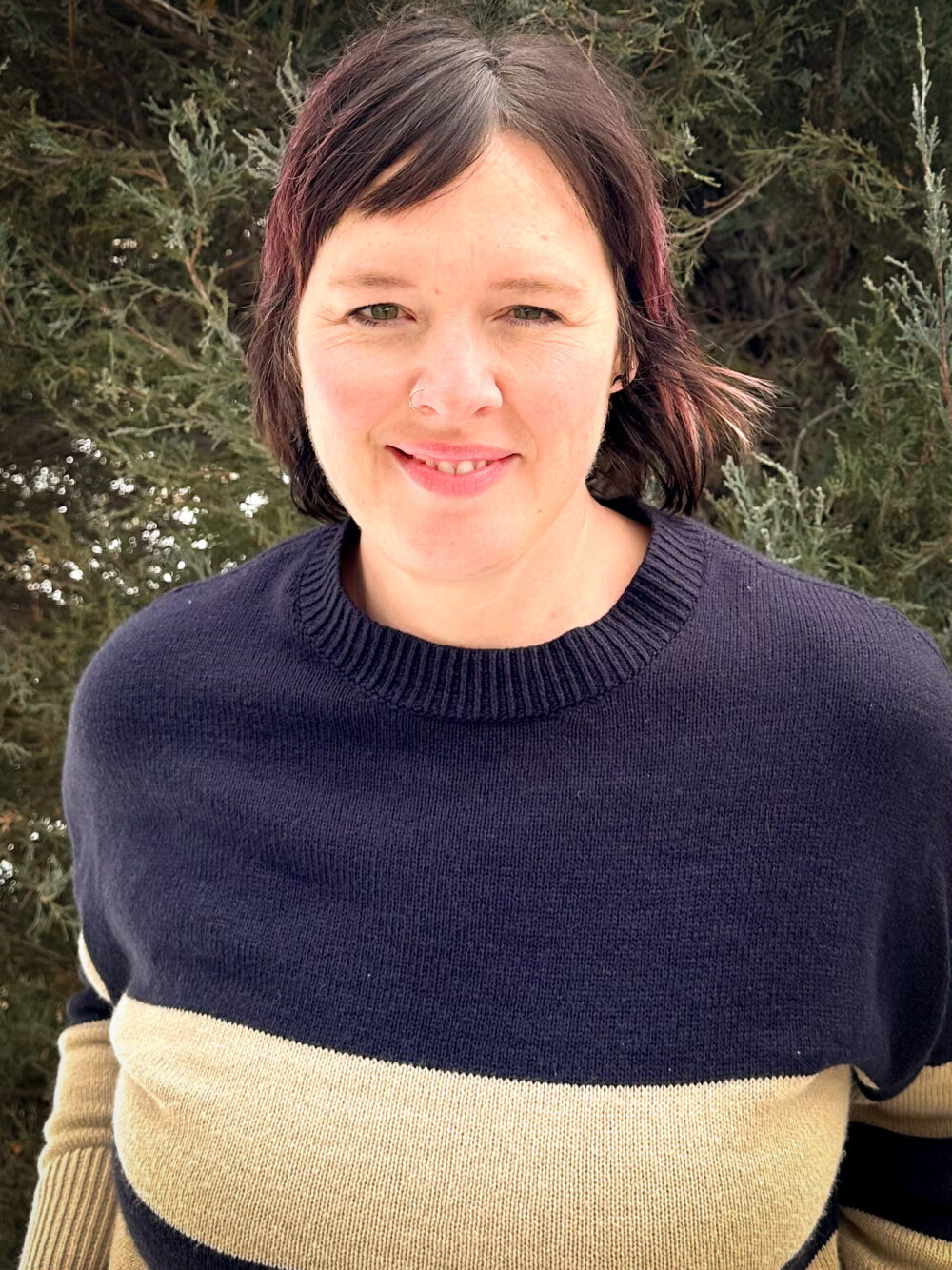
Katie believes the best things in life are the result of collaboration and diverse perspectives coming together to produce something greater than any individual could. She is passionate about systems, efficiency and collaboration for better community outcomes. She loves dreaming up the big picture and drafting the roadmap to make it happen. She has a background in operations, fundraising, communications and program development, as well as over a decade of nonprofit management experience in Northern Colorado.
Her greatest joy in life comes from her family. Her husband, Steven, a principal at Wellington Middle School, and daughters Emmaline and Esmae are the lights of her life. Together they love mountains, music and all kinds of food. She is passionate about women supporting other women in all stages of life and especially through the critical moments that make or break us. She believes that one of the most important things in life is to be kind.
Being outdoors makes her soul come alive. It always roots her in gratitude and is one of the reasons she loves living in Fort Collins.

